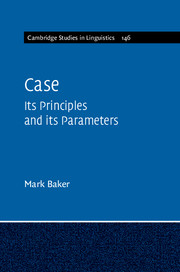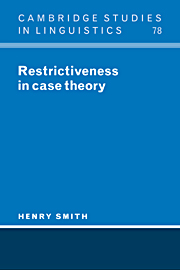Case
In Case, Mark Baker develops a unified theory of how the morphological case marking of noun phrases is determined by syntactic structure. Designed to work well for languages of all alignment types - accusative, ergative, tripartite, marked nominative, or marked absolutive - this theory has been developed and tested against unrelated languages of each type, and more than twenty non-Indo-European languages are considered in depth. While affirming that case can be assigned to noun phrases by function words under agreement, the theory also develops in detail a second mode of case assignment: so-called dependent case. Suitable for academic researchers and students, the book employs formal-generative concepts yet remains clear and accessible for a general linguistics readership.
- Presents a unified theory of morphological case phenomena
- Draws on and presents data from roughly twenty unrelated languages
- Employs formal-generative concepts yet remains clear and accessible to the general linguistics reader
Reviews & endorsements
"Case is impressive in its breadth and scope, the variety of data surveyed, and thoughtful argumentation. As he has done throughout his career, Mark Baker once again helps us think about fundamental concepts of linguistic theory."
Maria Polinsky, Harvard University
Product details
February 2015Paperback
9781107690097
354 pages
230 × 155 × 20 mm
0.59kg
Available
Table of Contents
- 1. The issue of structural case
- 2. The variable relationship of case and agreement
- 3. C-command factors in case assignment
- 4. Domains of dependent case assignment
- 5. Categories involved in case interactions
- 6. On the timing of case assignment
- 7. Conclusion: putting together the big picture.







